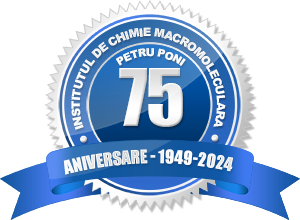|
Acronym: POLYCER
Project code: PN-III-P1-1.1-TE-2019-1245
Contractor: ICMPP
Budget: 431 900 lei
Duration: 24 months
The project is focused on the achieving of competitive hybrid composites starting from cellulose and nanoceria in order to provide advanced materials with excellent photocatalytic behaviour for the removal of organic pollutants, aiming the development of simple, green, economically feasible and efficient photocatalysts in the fulfil of contemporary environmental concerns.
From the scientific point of view, the goal is to prepare various hybrid composites starting from different native cellulose sorts (avicel, fibers, cotton linters, cellulose acetate), oxidized cellulose (by oxidation in environmentally friendly conditions) which contains carboxyl groups to ensure supplementary interactions with CeO2 NPs, and polymer blends of cellulose/oxidized cellulose with PVA to create intra- and intermolecular hydrogen bonding which lead to the enhancement of the photocatalytic performance.
A complementary work refers to the synthesis of CeO2 NPs by simple and green protocols (the co-precipitation method) and functionalization of CeO2 NPs with organic moieties (with terminal -NH2, -COOH groups) aiming to attain a covalent attachment of inorganic units to the cellulose materials, and a better dispersion within the organic matrix. Additionally, in the materials, noble metal nanoparticles (Ag, Au, Pd) will be generated to induce photocatalytic activity in the visible domain.
Final prepared nanocomposite materials will be thoroughly investigated with respect to the development of efficient photocatalysts for pollutants removal from water, highlighting the composites with the best photocatalytic and reusability performances. |








